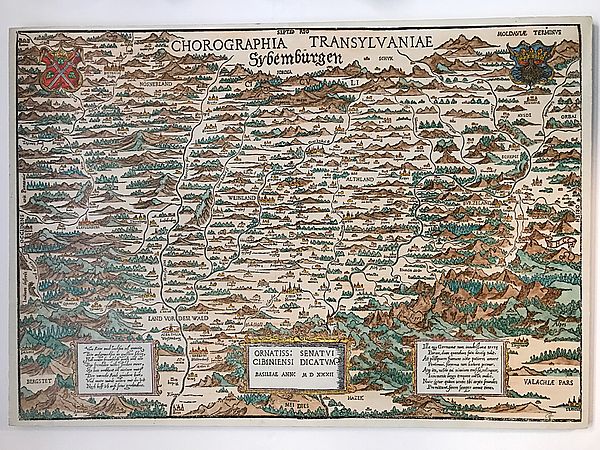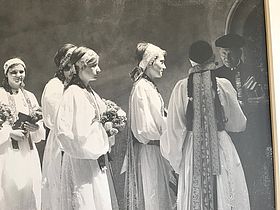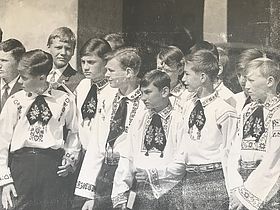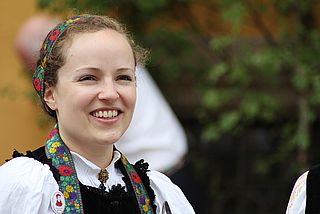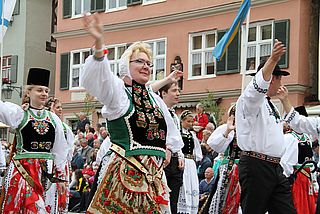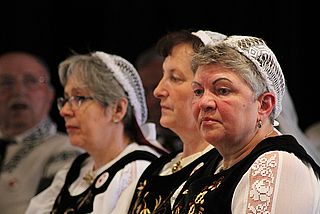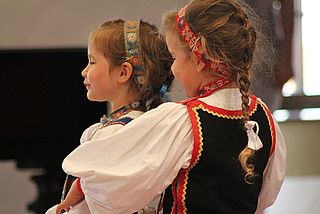Transylvania
Transylvania (Latin: Transylvania; Romanian: Transilvania, Ardeal; Hungarian: Erdély) is a region in the Carpathian Arch that belonged to Hungary in the Middle Ages, to Austria-Hungary in modern times and is now part of Romania.
Transylvania is characterized by the coexistence of different peoples (Romanians, Hungarians, Germans, Roma, Jews, Armenians, etc.) and different religions (Greek Orthodox, Roman Catholic, Greek Catholic, Evangelical Lutheran, Reformed, Anti-Trinitarian, Mosaic, etc.). These different influences on culture and history led to the early development of the principles of mutual tolerance and democracy.
The Transylvanian Saxons - a Chronological Review
The Transylvanian Saxons are, besides the Baltic Germans, the oldest group of German settlers in Eastern Europe.
Over the centuries the Transylvanian Saxons have developed their own political, economic, social and cultural structures through the interaction with other ethnic groups and cultures. They developed their own dialects and preserved the German language.
Starting 1141
The first settlers from regions of the Roman-German Empire were established in the Carpathian region by the then rulers of the medieval kingdom of Hungary in order to develop the region economically and defend it against foreign attacks. They came from all parts of the empire, mainly from the Rhine-Moselle region (dioceses of Cologne and Trier).
1211-1225
The Teutonic Order built castles in Transylvania, founded villages and endeavoured to establish its own state.
1224
Privileges („Goldener Freibrief“) granted to the Transylvanian Saxons by King Andreas II with important rights: Personal freedom, self-administration, own jurisdiction, own church, etc.
13th to 14th Century
Foundation of the cities of
- Hermannstadt/Sibiu
- Kronstadt/Brasov
- Mediasch/Medias
- Schäßburg/Sighisoara
- Mühlbach/Sebes
- Bistritz/Bistrita
- Klausenburg/Cluj
and others, in which trade and crafts flourish, education and culture develop.
15th to 16th Century
Threat from the Ottoman Empire, repeated invasions by the Turkish army, building of city walls and fortified churches (specific defence system of around 300 fortified churches).
1486
Foundation of a federation called the Transylvanian Saxon University (Universitas Saxonum) as a joint self-governing body of all free Transylvanian Saxons, supreme court and the endowment with military authority to defend the country, led by the Saxon Count (Comes Saxonum). It was not dissolved until 1876.
1541-1699
Principality of Transylvania under Ottoman supremacy: The Transylvanian Saxons are one of the three recognised classes of the state, they participate in the election of the reigning prince, are involved in legislation (with veto rights) and in national defence.
1550
In the course of the Reformation the Transylvanian Saxons became Lutherans.Together with the other religious communities they developed a system of mutual tolerance (1568: Edict of Thorenburg/Turda) that was unique in Europe at the time.
1583
Statutes or Own Land Rights of the Transylvanian Saxon („Statuta oder Eygen-Landrecht der Siebenbürger Sachsen“) is printed and is the basis of jurisdiction.
1691
Leopoldinian Diploma — After the Austrian occupation of Transylvania in the course of the Great Turkish War (1683 - 1699), Emperor Leopold I recognised Transylvania's special status, the privileges of its estates and the freedom of religion in the Principality of Transylvania.
1699
Peace of Karlowitz/Karlovci: International recognition of the annexation of Transylvania to the Habsburg Monarchy.
1765
Foundation of the Grand Principality of Transylvania within the Habsburg Monarchy.
1867
Austro-Hungarian Compromise of 1867: Transylvania now belongs to the Hungarian part of the Austro-Hungarian dual monarchy. The Transylvanian Saxons have to resist the Magyarisation effort, but also experience a new economic heyday.
1918
The unification of Transylvania with the Kingdom of Romania is proclaimed in Karlsburg/Alba Iulia, and is sanctioned under international law by the Treaty of Trianon (1920). The Transylvanian Saxons resist Romanianization tendencies and struggle against economic losses, caused in particular by the Agrarian Reform of 1921. The German minority was, however, represented in parliament. National Socialist "renewal movements" are getting popular.
1940
Recognition by the Romanian state of the National Socialist German Ethnic Group in Romania as the representation of the German minority. During the Second World War the Transylvanian Saxons were drafted into the Romanian army. As from 1943 (Hitler-Antonescu Treaty) they were conscripted into the German army and the Waffen-SS. Numerous soldiers are wounded or killed.
1944
Romania changes fronts, the Red Army occupies the country, the communist seizure of power gains momentum. The Romanian Germans were deprived of their civil rights. In 1945 men and women able to work were deported to the Soviet Union for „reconstruction work“.
1947
Proclamation of the People's Republic of Romania, communist transformation of the country with a second agrarian reform, expropriation of banks and enterprises, foundation of agricultural production cooperatives. The collective punishments for the Romanian Germans were lessened from 1949 on, German was permitted as the language of instruction in schools, in newpapers and in theatre performances. The general communist terror, from which all inhabitants of the country suffer, persists and is even intensified after 1956 (show trials like the one against Romanian German writers); mass surveillance and repression by the secret police Securitate is directed at the entire population.
1949
Foundation of the Association of Transylvanian Saxons as the political representation of the interests of Transylvanian Saxons living in Germany. Numerous scientific, cultural, social and church groups as well as local communities resume their work or are founded. The Johannes Honterus Benefit Society acquires Horneck Castle and opens a centre incorporating a nursing home for the elderly with a museum and a library.
1965
Proclamation of the Socialist Republic of Romania. After a short phase of liberalization under communist party leader and President of the Republic Nicolae Ceausescu, the communist power structures are consolidated,industrialisation is carried out at a frantic pace, and the formation of a unified socialist (Romanian) nation gains momentum. Increasing numbers of Transylvanian Saxons resettle in Germany, especially after the establishment of diplomatic relations with the Federal Republic of Germany in 1967.
1989
The Romanian Revolution against communist rule, proclamation of the Republic of Romania. A mass exodus of the Romanian Germans begins. The remaining members of the Saxon community in Transylvania organised themselves in the "Democratic Forum of the Germans in Romania" in 1989.
2007
Romania becomes a member of the European Union, Hermannstadt/Sibiu is European Capital of Culture together with Luxembourg. The mayor of Hermannstadt/Sibiu, Klaus Werner Johannis, a Transylvanian Saxon who has been in office in Hermannstadt since 2000, is elected President of the Republic of Romania in 2014.
The Transylvanian Saxons today
Today about 200,000 Transylvanian Saxons live in Germany, a small but very active part lives in Romania, others in Austria, the USA, Canada and other countries.
The Transylvanian Saxons act today, as in the past, as mediators between the ethnic groups and cultures of Transylvania and as bridge builders between East and West.

